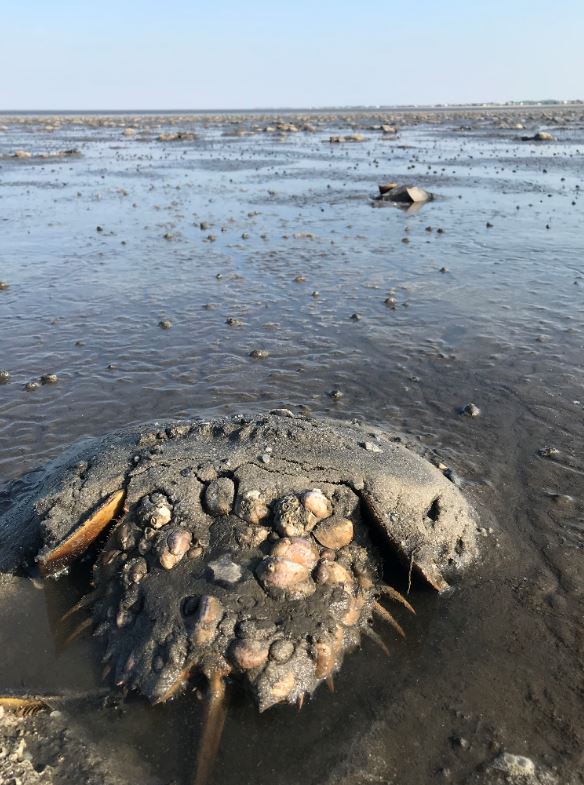The Delaware Bay is extraordinarily rich in biological resources. The beaches, mudflats, and marshes that line Delaware Bay provide abundant food and habitat for many species.
The Delaware Bay Supports a variety of species. As many as 30 species of shorebirds visit the Delaware Bay in May. The majority are Red Knot, Ruddy Turnstone, Semipalmated Sandpiper, Sanderling, and Dunlin. The search for food and nesting area leads these shorebirds to incredible migrations.
The Delaware Bay fits prominently in the life cycle of some of these migration masters.
Red Knots and other shorebirds depend on the availability of horseshoe crab eggs during their stop-over. Conservation of horseshoe crabs and their spawning areas is critically important.
Some populations winter as far south as Tierra del Fuego, the southern tip of South America.
More than half of the Western hemisphere’s population of Red Knot may be in the Delaware Bay in May.

Red Knots may travel 20,000 miles round trip per year making non-stop flights of 2,000 miles or more.
More than 90% of their diet at the Delaware Bay consists of horseshoe crab eggs.
The weight they gain from horseshoe crab eggs allows them to make their final non-stop flight to their Arctic breeding grounds. It will also help sustain them during the initial nesting period until food becomes available there.

There are four species of horseshoe crab worldwide. Only one species (Limulus Polyphemus) lives in North America. The largest population is in the Delaware Bay.
Horseshoe crabs are not actually crabs. They are arthropods more closely related spiders and scorpions.
The tail, or telson, is not a venomous stinger. It is used for steering while swimming and to right themselves if they are turned upside down.
It takes about 9 years for a horseshoe crab to become sexually mature.
During spawning, a female horseshoe crab lays a cluster of about 4,000 eggs several times each night and may lay around 100,000 eggs each season.
Learn more about the relationship between Horseshoe Crabs and Red Knots.
Related Topics: birds, conservation, delaware bay, fish and wildlife, habitat, red knots, shorebirds, wildlife